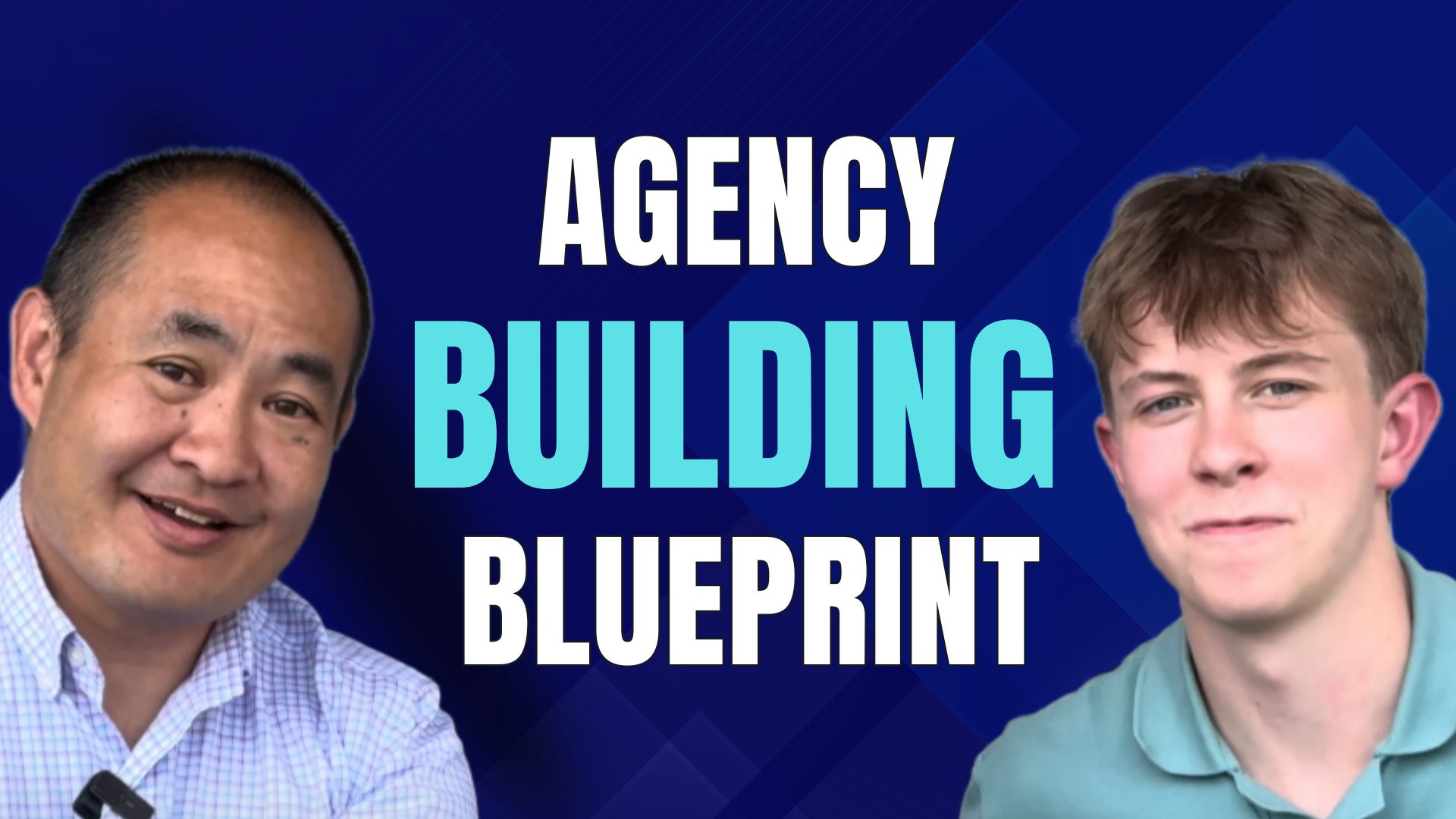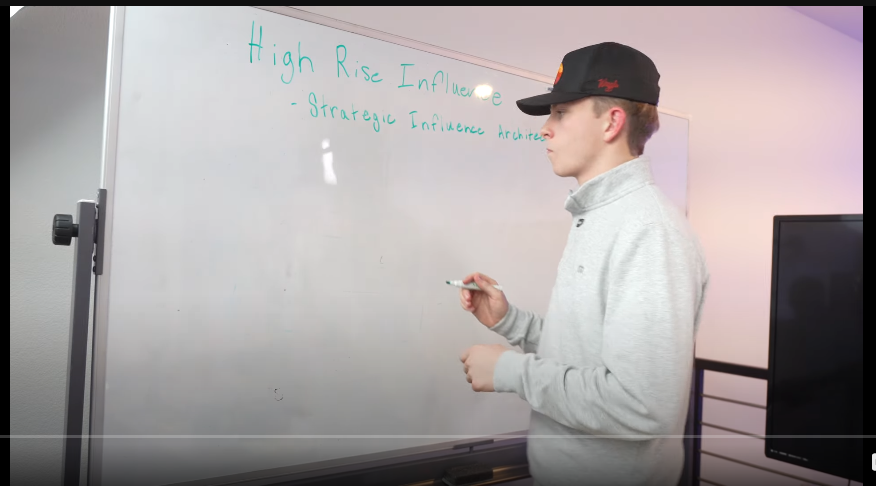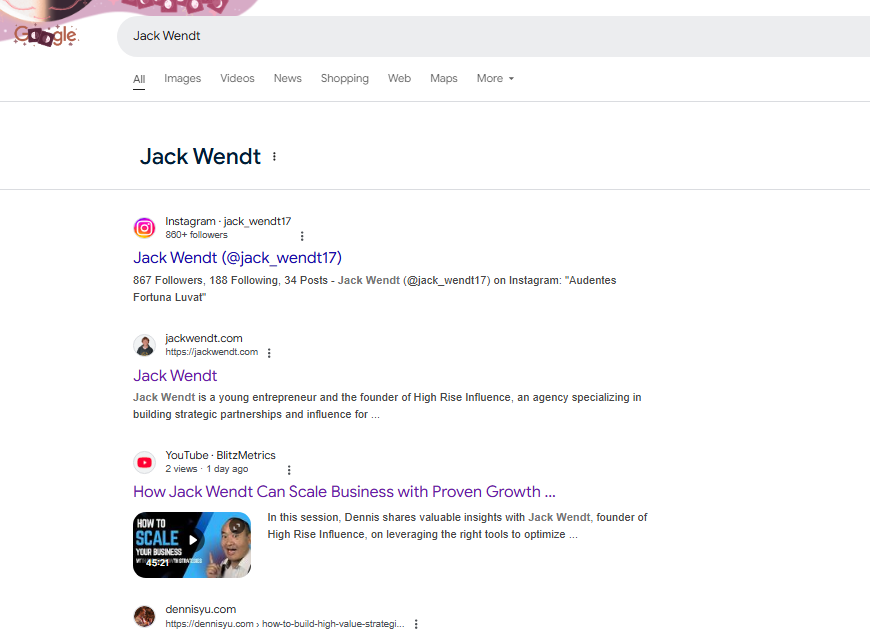
When Jack Wendt and I sat down to build his agency, High Rise Influence, we wanted to create something different—something that was not just about selling but about building lasting influence.
This article explains how we did it, providing a detailed look at the steps we took. If you’re a young adult looking to start your own agency or business, this guide will help you understand how to create a process that scales, focuses on clients, and delivers real results.
Step1: Define the Mission and Role
The first thing we did was define Jack’s role in the company. We decided Jack would be a Strategic Influence Architect.
This meant his role would be similar to an architect designing a skyscraper, but instead of blueprints for a building, Jack was going to create blueprints for influence—helping his clients become the leaders in their industries.
The analogy of building a skyscraper shaped our approach. We decided to use construction terminology like blueprint, foundation, and scaffolding to describe different phases of the process.
This step was made more precise with the help of ChatGPT. When brainstorming Jack’s title, we asked ChatGPT to suggest names that would emphasize Jack’s behind-the-scenes work while highlighting strategy and intentional action. ChatGPT suggested “Strategic Influence Architect,” which resonated with us because it aligned perfectly with our vision of designing and implementing influence blueprints.
Step 2: Outline the Stages of Influence Building
We broke down the client journey into several distinct phases using a four- or five-stage model. Each stage represented a step in building the “high-rise” of influence for our clients:
1. Blueprint Phase (Month 1): The first month is dedicated to creating a detailed blueprint—a custom plan tailored to each client.
This plan includes an audit of the client’s current assets, such as their web presence, social media, speaking engagements, and existing content. This is like drawing up the architectural plans for a building. We wanted to make sure we knew all the “ingredients” we had to work with before beginning construction.
ChatGPT played a role here by helping us refine the blueprint concept and suggesting ways to present the process visually. The AI helped us define this stage as a comprehensive “content inventory,” likening it to mapping raw materials for a skyscraper. It even suggested incorporating a tool like a ‘Topic Wheel’ to organize and connect these assets systematically.
2. Foundation Phase (Month 2): Once the blueprint is ready, we move into the Foundation phase. Here, we “pour the concrete” by organizing and processing the client’s assets.
We lay the groundwork to make sure all the strategic pieces are in place—whether it’s clarifying the client’s target audience, solidifying messaging, or enhancing their brand identity.
3. Scaffolding and Building Phase (Month 3 and Beyond): After the foundation is set, we start building. This phase focuses on leveraging and amplifying the client’s content, creating new media, and expanding their reach.
We’re constantly “putting up scaffolding” by using Jack’s proprietary processes for repurposing content and strategic amplification through social media advertising and distribution.
Step 3: Create a Report Card Model
One of our most important tools is the Influence Report Card. During our planning session, we sketched out a system where we graded a client’s influence across several axes, such as public speaking, web presence, publishing, and podcasting.
These axes provided us with a clear view of where a client was doing well and where there were gaps to fill.
The report card isn’t just a conceptual tool—it’s a physical deliverable that clients can see and understand. We used grades like A, B, and C and detailed what each meant for their growth. Each month, we return to this report card to show improvements, adding a measurable aspect to influence-building that is usually pretty intangible.
The Influence Report Card is very much like a medical report or an MRI scan. Just as a medical report provides a thorough assessment of a patient’s health, identifying strengths and areas of concern, our Influence Report Card provides a detailed snapshot of a client’s brand health.
It helps us understand what is working well, what needs improvement, and what elements are missing altogether. This “diagnosis” then drives the creation of the blueprint—ensuring that we know exactly which parts of the client’s influence ecosystem need attention, just as a doctor would tailor treatment based on an MRI result.
By taking this approach, we’re not just guessing what might work for the client; we’re using a data-driven method to build a custom strategy that addresses the exact needs of their brand.
This kind of precision ensures that every effort we make is targeted, efficient, and designed to yield maximum impact. The report card becomes the foundation for informed decision-making, ensuring that the blueprint we create is both comprehensive and actionable.
Step 4: Nailing Down the Target Audience
It’s important to know who you serve. For High Rise Influence, Jack wanted to work with founder-led businesses. We added more qualifiers—such as ensuring that the founders had some level of industry leadership or proof of their expertise, whether that was public speaking, published work, or demonstrated success in their field.
This kept us focused on working with clients who were ready to amplify their existing influence, not trying to build it from scratch.
Step 5: Systematizing Influence and Building a Team
The key to Jack’s growth has also been leveraging his two LIGHTHOUSE—existing clients who are well-known in their industries: Caleb Guilliams and me (Dennis Yu). By using these established relationships as examples, Jack is practising what he preaches.
He’s able to demonstrate his methods in real time, showcasing how the strategies he’s building for others are the very ones he’s successfully implementing with us.

Jack also began working with Tree Savages, a coaching company founded by Sean Klongerbo, to help it scale its influence.
Together, we conducted an in-depth SEO audit to identify key areas for improvement, including repurposing Sean’s existing videos into blog posts, enhancing the website, and running targeted “Dollar-a-Day” ads.
These efforts are helping Tree Savages attract more coaching clients while amplifying its authority in the tree service industry.
One of the key takeaways from our conversation was that while Jack’s role was to design the strategic blueprint, the actual building of influence could be done by a team—much like how construction workers follow the architect’s plans.
We discussed the need for Virtual Architects (VAs) who could help execute the blueprint.
These VAs would be trained to handle the day-to-day aspects of content repurposing and amplification while Jack stayed focused on strategy and client relationships. This approach meant Jack could scale without being bogged down by every single task, ensuring consistent, quality work for each client.

Step 6: Build Authentic Relationships
We also talked about the importance of authenticity. Rather than push clients into buying services, Jack would position himself as a catalyst—someone who helps amplify the client’s existing strengths and gets the right people involved to execute the plan. By focusing on building genuine relationships and using authentic content, we ensured that clients were not just sold a service but were part of a process that grew their brand in meaningful ways.

One example of Jack’s authenticity in action was during our presentation at Boostability. Speaking to 200 people, Jack showcased humility and action, using AI tools to review a website live—without prior preparation. He trusted the process, letting me handle the tech while he shared insights.
This moment highlighted Jack’s ability to connect with the audience, not just through expertise but by being genuine and willing to step out of his comfort zone. People resonate with authenticity and relatable stories, and Jack’s openness made the experience impactful and memorable.

Step 7: Prepare the Client Journey and Manage Expectations
We wanted clients to know exactly what to expect when they worked with Jack. From the initial audit to monthly check-ins, everything was planned to build trust and clarity.
For each client, we provided a roadmap for six months, broken down into phases that focused on measurable outcomes. We emphasized that influence-building is a long-term game, much like training for a marathon—you’re not going to see results overnight, but with consistent effort, the growth is real and sustainable.

Jack’s own journey is proof that this process works. By following the strategies we implemented together, Jack has achieved significant milestones, including earning a partial Knowledge Panel—a clear indicator of his growing authority and influence.
It’s a big deal because it shows that the work he’s put into amplifying his presence is paying off in a measurable way.

This kind of result is exactly what Jack now delivers for his clients. By sharing his own experience and the steps he took, Jack helps set realistic expectations and inspires others to see what’s possible when you commit to building your influence the right way.
Step 8: Keeping Score and Showing Results
Every month, Jack meets with clients for a 15-minute check-in to discuss their Influence Report Card. This meeting helps frame where they’ve been, where they are, and where they’re going.
It’s an opportunity for clients to see tangible progress and discuss any new goals or tweaks to the strategy. It keeps them invested in the process, and it gives Jack a chance to show the value he’s delivering.
Step 9: Moving Beyond Six Months
We also planned for what happens after six months. Influence-building doesn’t end—it evolves. After the initial “construction” phase, the next step might be to hire dedicated VAs for ongoing content management or transition into a maintenance mode for monitoring and light management.
We also discussed shifting focus to areas like advertising to further leverage the content and reach new audiences.
Ingredients for Client Success
For clients to successfully build their influence, they need certain “ingredients” in place. Here’s a list of key ingredients that are essential for their growth:
– Industry Leadership: Proof of expertise or leadership, such as awards, published work, or notable achievements.
– Existing Content: A library of videos, articles, podcasts, or other content that can be repurposed and amplified.
– Public Speaking Experience: Previous speaking engagements or presentations that showcase the client’s authority.
– Clear Target Audience: A well-defined understanding of who they serve and what their audience needs.
– Authenticity: A genuine voice and story that can be shared to connect with the audience.
– Willingness to Collaborate: A collaborative mindset to work with the team and provide input where needed.
– Social Proof: Client testimonials, case studies, or media mentions that validate the client’s expertise.
– Commitment to Long-Term Growth: An understanding that influence-building takes time and consistent effort.
Final Thoughts: Systematizing Success
What sets High Rise Influence apart is the systematized approach we created. Instead of leaving influence-building as a vague concept, we made it practical, measurable, and scalable.
Our brainstorming sessions with ChatGPT were invaluable in refining this system. From naming the company ‘High Rise Influence’ to designing the Influence Report Card and structuring the blueprint phases, ChatGPT’s input enhanced our ideas, making them more focused and actionable.
By combining human creativity with AI-driven insights, we created a business model that is both innovative and impactful.
If you’re thinking of starting your own agency or consulting business, remember to define your role clearly, systematize your services, focus on relationships, and always provide tangible results for your clients.
